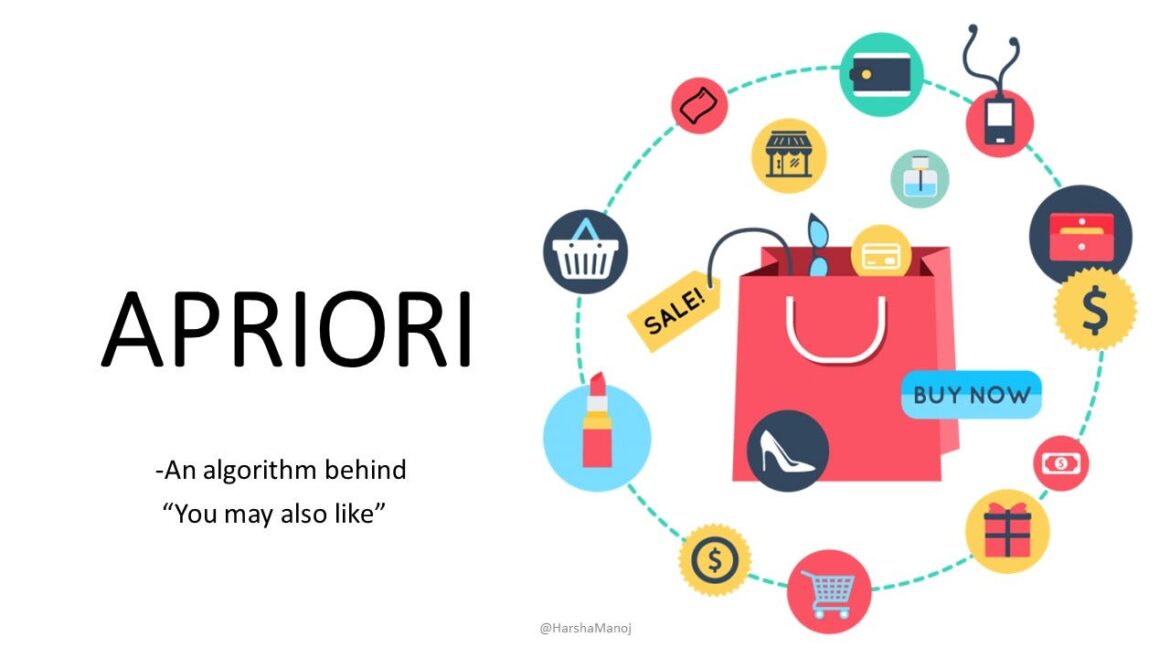Apriori
Introduction
Apriori is a classic algorithm used for association rule mining in data mining and machine learning. It aims to discover interesting patterns, relationships, or associations between items in transactional databases or datasets containing sets of items.
Here's an explanation of the Apriori algorithm:
- Support, Confidence, and Lift
- Apriori is based on three key metrics: support, confidence, and lift.
- Support measures the frequency of occurrence of a set of items in the dataset.
- Confidence measures the probability that a rule is true given that another rule is true.
- Lift measures the likelihood of two items occurring together compared to the likelihood of them occurring independently.
- Frequent Itemsets
- The Apriori algorithm generates frequent itemsets, which are sets of items that appear together in transactions with a frequency greater than or equal to a specified threshold (minimum support).
- It starts by identifying all individual items that meet the minimum support threshold and considers them as candidate 1-itemsets.
- It then iteratively generates candidate k-itemsets by joining frequent (k-1)-itemsets and pruning those that do not meet the minimum support threshold.
- Association Rules
- Once the frequent itemsets are identified, the Apriori algorithm generates association rules from these itemsets.
- Association rules are of the form X -> Y, where X and Y are sets of items. These rules indicate that if X occurs, then Y is likely to occur as well.
- The algorithm calculates the confidence and lift for each rule and filters out rules that do not meet the minimum confidence and lift thresholds.
- Algorithm Steps
- Initialize: Identify frequent 1-itemsets by scanning the dataset and applying the minimum support threshold.
- Generate Candidate Itemsets: Iteratively generate candidate k-itemsets by joining frequent (k-1)-itemsets and pruning those that do not meet the minimum support threshold.
- Prune: Remove infrequent itemsets from the candidate itemsets.
- Repeat: Continue the process until no more frequent itemsets can be generated.
- Generate Association Rules: Generate association rules from the frequent itemsets, calculate their confidence and lift, and filter out rules that do not meet the minimum thresholds.
- Example Application
- Apriori can be used in market basket analysis to discover patterns in customer purchases.
- For example, it can identify rules such as "if {bread, milk} -> {eggs}" with high confidence and lift, indicating that customers who buy bread and milk are likely to buy eggs as well.
Apriori is a widely used algorithm for discovering association rules in transactional data and has applications in various domains such as retail, e-commerce, recommendation systems, and basket analysis.
Let's go through an example of using the Apriori algorithm to find association rules in a transactional dataset:
Suppose we have a dataset representing transactions in a grocery store:
Transaction ID Items
1 Bread, Milk
2 Bread, Diapers, Beer, Eggs
3 Milk, Diapers, Beer, Coke
4 Bread, Milk, Diapers, Beer
5 Bread, Milk, Diapers, Coke
We want to use the Apriori algorithm to find association rules between items in these transactions.
Here's how we can implement it in Python using the mlxtend library:
- Import necessary libraries.
from mlxtend.preprocessing import TransactionEncoder
from mlxtend.frequent_patterns import apriori, association_rules
- We define the transactional dataset as a list of lists, where each inner list represents a transaction and contains the items purchased in that transaction.
dataset = [
['Bread', 'Milk'],
['Bread', 'Diapers', 'Beer', 'Eggs'],
['Milk', 'Diapers', 'Beer', 'Coke'],
['Bread', 'Milk', 'Diapers', 'Beer'],
['Bread', 'Milk', 'Diapers', 'Coke']
]
- We use the TransactionEncoder from the preprocessing module to one-hot encode the dataset. This converts the transactional data into a binary matrix format suitable for analysis with the Apriori algorithm.
encoder = TransactionEncoder()
one_hot_encoded = encoder.fit_transform(dataset)
- We use the apriori function from the frequent_patterns module to find frequent itemsets in the dataset. We specify a minimum support threshold of 0.2, meaning that an itemset must appear in at least 20% of transactions to be considered frequent.
# Convert the encoded data to a DataFrame
df = pd.DataFrame(one_hot_encoded, columns=encoder.columns_)
# Find frequent itemsets using Apriori algorithm
frequent_itemsets = apriori(df, min_support=0.2, use_colnames=True)
- We use the association_rules function to generate association rules from the frequent itemsets. We specify the lift metric and a minimum threshold of 1, indicating that we only want rules with a lift greater than 1, indicating a positive correlation between items.
rules = association_rules(frequent_itemsets, metric='lift', min_threshold=1)
- We print the frequent itemsets and association rules to see the results.
print("Frequent Itemsets:")
print(frequent_itemsets)
print("\nAssociation Rules:")
print(rules)
In this example, the Apriori algorithm identifies frequent itemsets and association rules in the transactional dataset. The frequent itemsets represent sets of items that frequently appear together in transactions, while the association rules indicate relationships between items, such as "if Bread and Milk are purchased, then Diapers are likely to be purchased as well" with a certain level of confidence and lift.

